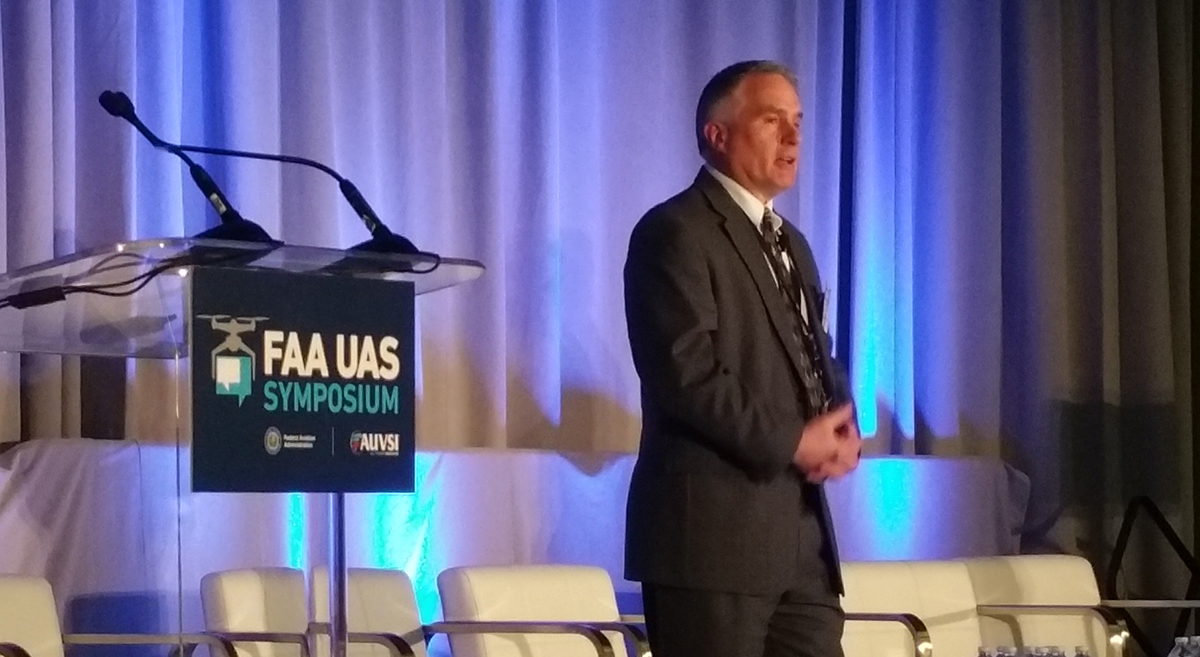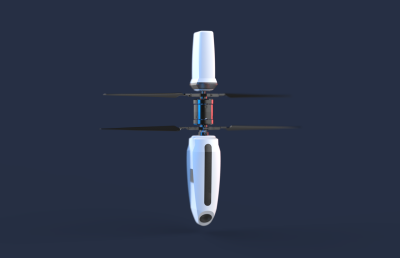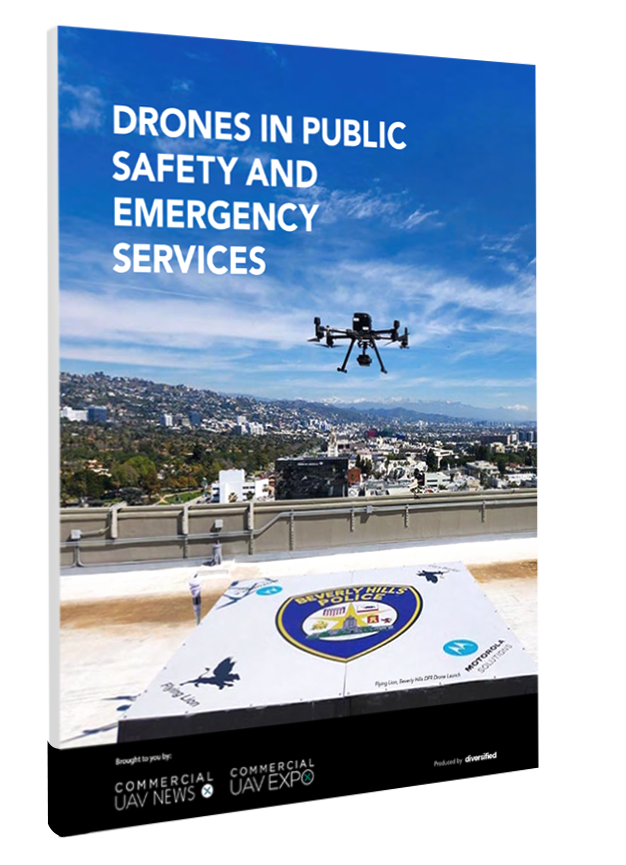Many of the discussions at the recently completed FAA UAS Symposium were associated with familiar drone industry topics like the ability to operate beyond visual line of sight (BVLOS) and drone delivery, among plenty more. News associated with the nationwide expansion of the LAANC program was big for a variety of reasons, but it wasn’t the most notable development that came out of the event for the drone industry.
More than anything else, the concept of the FAA being “
open for business” was as pervasive as it was important at the event, as a variety of FAA officials went out of their way to talk about how they wanted to collaborate with drone industry stakeholders. What that can and will mean for the drone industry as a whole will play out across a variety of topics that were discussed in detail at the event.
“Safety is our top priority, but it is everyone’s shared responsibility”That quote comes directly from FAA Acting Administrator, Dan Elwell’s
opening keynote, wherein he talked about how everything the FAA does is from the perspective of safety. That’s part of the reason why some other officials referenced safety as being the
key that can unlock the front door of the NAS. Doing so needs to be approached in terms of making a given task smarter and more efficient, which should have the dual industry benefit of increasing safety and creating jobs.
This
focus on safety and collaboration was a major theme at the event, and various FAA stakeholders talked about how questions related to the way in which someone can or can’t operate in the airspace usually comes down to how risk will be mitigated when doing so. Building a
safety culture is a major priority for the FAA, and that’s part of the reason Elwell mentioned the next 12-18 months are critically important. It’s also why the FAA wants to work with operators and innovators to make progress together, as the
FAA knows that it can't do it alone. “All aircraft must be identifiable”A crucial component of this airspace integration is related to the ability to remotely identify an aircraft in flight. As Angela Stubblefield said, the FAA is looking to mitigate
“the clueless, the careless, and the criminals”. Doing so means providing education for anyone who doesn’t know the rules (the clueless) as well as to anyone who is unknowingly breaking (the careless) them. It also means protection for the people on the ground and in the air again anyone who is knowingly breaking them (the criminal).
Gur Kimchi from Amazon mentioned that the airspace is
only as safe as the least safe element in it. A major part of ensuring those unsafe elements don’t have the chance to enter it is related to tracking, but this raises privacy concerns on the part of the industry and the public at large. The common challenge there is related to anonymity, which obfuscates intent. Kimchi mentioned that privacy is different than anonymity, although various stakeholders draw the lines between such things in different places. A consensus around where and how to draw these lines is something that isn’t specifically related to the drone industry.
However, one aspect of this debate that is specifically related to the drone industry surrounds the kinds of systems and requirements that should be associated with identification. Should identification be tied to a registration process? What role or support should drone manufacturers play in this? As Dee Ann Divis has previously mentioned, this is an issue that
has a variety of stakeholders splintered, even as the ability to identify pilots remotely has been labeled as a top priority by regulators and industry.
Whatever the solution, it’s one that should stress safety, be technology neutral and enable collaboration. As ever though, the devil is in the details.
Advertise with Us ›
“With data, automation can be a better answer to safety if done right.”This quote from
James Burgess at Project Wing is related to the drone delivery system the company is developing, but it’s a topic that goes beyond this specific application. Automation as it relates to where and how drones can enter the airspace will create efficiencies and also ensure that manned and unmanned systems safely co-exist in the airspace.
The automated process
associated with LAANC has created a model that many are anxious to see expanded in direct and indirect ways. Jesse Kallman from Airbus Aerial
mentioned that in twelve months, they wanted to see more automated processes for approvals. FAA officials also mentioned that the way they’ve been working is a manual process, and
they’re focused on creating and transitioning into automated processes where they can.
“What do I need to prove to operate BVLOS?”That very question is one that came up at various points throughout the conference, and the biggest challenge with doing so seems to be associated with the sort of info that operators are presenting to the FAA for approval. Ultimately, the FAA wants to see the safety case. As
Greg Avant from CNN said, success in receiving a waiver is about putting an entire safety management process in place. In essence, this ends up being the safety case the FAA wants and needs to see in order to give approval.
FAA officials stressed that what they need to hear from anyone applying for a BVLOS waiver is how that operator is going to mitigate risk. They want to know exactly how someone is going to approach the task, and they want to have a dialogue around it. They want operators to understand what they want to do, and show they can meet the standards.
As Diana Cooper from PrecisionHawk
mentioned, there is no single concept for operations or for BVLOS. Different operations are going to require different technology skillsets, training and documentation, and the FAA is not going to approve anything that looks like it’s coming from a template. Anyone interested in operating BVLOS needs to focus on making the safety case to the FAA. Officials have literally said that if you can prove the safety case,
they’ll issue the waivers.
“Don’t wait for UTM” PK from NASA was on hand to join the “Understanding and Enabling Air Traffic Management for UAS” session, and he mentioned their research is set to be complete by 2019. Officials also mentioned that while
everyone is aligned with the principles of the UTM, they need and want to be flexible with the data. However, the process associated with doing so isn’t one that operators should wait on before moving to adopt the technology.
That issue of “
don’t wait on the FAA” is one that extended to more than just a UTM and goes back to the concept of collaboration. FAA officials actively encouraged industry representatives to send them their ideas,
and potentially challenge their position. They also talked about how they were going to be working with the community-based organizations to communicate better. It’s something you can see the agency is working toward with the variety of resources at the
FAA Drone Zone, although their efforts to connect with the community
don’t stop there.
The impetus to adopt drones is being driven by the
quantifiable value the technology has been able to create, but for a long time, the regulatory issues associated with doing so served as a significant barrier. Part 107 removed many of these barriers, but many still questioned what it would mean for them to sort through the red tape associated with legally operating a drone under Part 107, much less the waiver process to enable BVLOS or night time flying operations. What it means to see this regulatory burden removed is part of the reason the FAA’s central message from the event is so critical.
“The FAA is open for business”I hate to repeat the same talking point as referenced above, but it’s impossible to overstate how pervasive that sentiment was throughout the event, and how it directly relates to the concept of regulator/industry collaboration. Innovation without collaboration doesn’t provide regulators or industry stakeholders with a path forward. It’s something the FAA has clearly recognized, and they’re making an active effort to do something about it.
These efforts tie into something Earl Lawrence mentioned about the government
moving at the speed of trust. Regulators want to be able to trust that the individuals and organizations trying to work with them respect the airspace and put a priority on safety. Regardless of what someone is trying to do, the FAA expects operators
to have a good understanding of the NAS and the risks, and know how to mitigate those risks. The FAA wants to work with the industry, but they can’t work with people who don’t understand the stakes.
While never explicitly stated, the FAA hasn’t always been open for business when it comes to taking a drone into the airspace. The drone industry as a whole needs to recognize this change and take FAA officials at their word when to comes to collaborating with and challenging them. Doing so might not always be a simple or easy process, but it’s something that has to happen for anyone who wants to unlock the potential of this technology.
That the FAA is making an active effort to work with the industry to do so should be as exciting as it is profound for anyone interested in approaching their work in a faster, cheaper and/or safer manner.




sm.jpg.small.400x400.jpg)










Comments